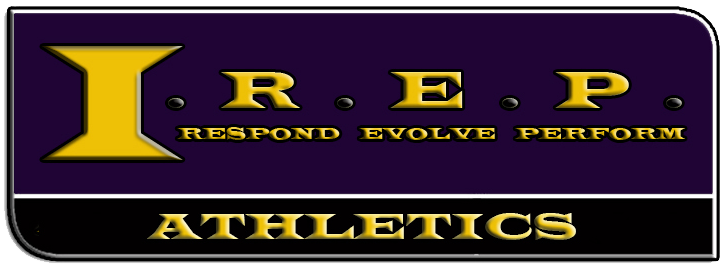Why Invest in a Personalized Trainer for Ironman Coaching?
A personal trainer with Ironman coaching experience will design a training plan that is specifically tailored to meet your individual needs. Unlike generic training programs, a customized plan takes into account your current fitness level, training availability, past injuries, and specific performance goals. This personalized approach ensures that your training is sustainable, reducing the risk of overtraining and injury.
A specialized personal trainer understands the principles of building endurance safely and effectively. They will guide you through various training phases, incrementally increasing your workload in a structured manner that allows your body to adapt without breaking down.
Improper technique can lead to inefficiencies and injuries, particularly in the disciplines of swimming and running. Personal trainers excel in identifying and correcting technical flaws, which can enhance your efficiency in each section of the race. They can provide you with drills and feedback that improve your form, leading to a better economy of movement and reduced injury risk.
Ironman training demands high energy expenditure, making proper nutrition vital. Personal trainers with expertise in this area can offer guidance on your daily dietary needs, hydration strategies, and race-day nutrition. They can help you plan your meals and snacks to fuel your workouts and recovery, tailoring recommendations to your taste preferences and any dietary restrictions you may have.
Having a personal trainer means having someone who is invested in your success and who holds you accountable to your training commitments. They can provide support during difficult times, helping you push through barriers and stay on track toward your goals. Regular check-ins and progress assessments ensure that you remain focused and motivated.
A personal trainer can adapt your training program to accommodate changes in your schedule, health status, or other unforeseen circumstances. This flexibility helps you maintain progress even when disruptions occur, ensuring that you can change the situation if necessary without losing sight of your end goal.
Injury can derail the most dedicated training endeavors. An adept personal trainer prioritizes injury prevention, integrating techniques like strength training, flexibility exercises, and form correction into your schedule. Equally important is programmed recovery—teaching your body to heal and adapt—which can make the difference between continuous improvement and burnout.
Fostering a Symbiotic Coach-Athlete Relationship
An athlete must feel comfortable sharing feedback about the training, as well as any personal factors that might affect their performance, such as stress or fatigue. Similarly, a coach should communicate clearly about expectations and provide constructive feedback. Establishing regular check-ins can facilitate this exchange and ensure that both parties are aligned in their goals and methods.
Trust is built over time and is important for a successful partnership. An athlete needs to trust the coach’s expertise, believing that the training plan provided will lead to improved performance and minimized injury risk. A coach must trust that the athlete is committed to the program and is exerting the necessary effort during training.
A coach is a mentor and guide whose role is to lead the athlete toward their goals. The athlete’s role is to be receptive to coaching, dedicated to executing the training, and actively participating in the learning process.
Discussing and agreeing on clear, realistic goals ensures that both parties are working toward the same endpoint. When goals are aligned, strategies can be developed cooperatively, enhancing the effectiveness of the training program.
The athlete assumes responsibility for their training and actions, while the coach is accountable for the guidance they provide. When both members of the relationship accept their responsibilities, it maintains a balance where success and failure are shared and constructive changes can be implemented when necessary.
Data Analysis and Performance Tracking
Using devices such as heart rate monitors, GPS watches, and power meters, a coach can precisely track an athlete’s workload during each training session. This data is vital for ensuring the athlete is training at the right intensity to maximize endurance without overreaching, which could lead to overtraining or injury.
 Changes in key performance metrics can be evaluated to determine whether the athlete is responding well to the training regimen. By tracking trends, a coach can make adjustments to training well before major issues arise, keeping the athlete’s preparation on course.
Changes in key performance metrics can be evaluated to determine whether the athlete is responding well to the training regimen. By tracking trends, a coach can make adjustments to training well before major issues arise, keeping the athlete’s preparation on course.
Recovery is as important as the training itself, and technology can help monitor an athlete’s recovery status. Tools such as sleep trackers and heart rate variability (HRV) monitors can provide feedback on how well an athlete’s body is recovering from their training load. This allows for tailored rest days and recovery strategies, optimizing an athlete’s overall well-being and readiness for subsequent training.
Athletes can perform race simulations under conditions similar to those expected on race day. They can use indoor cycling trainers that mimic the course elevation profile or run on routes that simulate the marathon leg of the Ironman. Such simulations help in developing effective pacing strategies and energy expenditure plans for racing.
Data from technology helps identify areas where an athlete can improve efficiency. A bike power meter can help an athlete maintain the right power output to avoid fatigue. Wearables can assess the stroke rate in swimming and ground contact time in running, identifying opportunities to economize effort without sacrificing speed.
Combining wearable technology with mobile apps allows athletes and coaches to track caloric expenditure and nutritional intake. These insights are critical in planning nutrition strategies, both for training purposes and for race day, ensuring that the athlete’s energy stores are optimized for peak performance.
Athletes can share their workout data with their coach in real-time, no matter the distance, allowing for immediate feedback and a level of coaching intervention that was previously only possible with in-person sessions.
There are various software platforms designed specifically for analyzing athletic performance data. These platforms can aggregate data from multiple sources, providing comprehensive analytics that helps coaches understand the big picture of an athlete’s training status.
Braving the Mental Marathon
Mental resilience involves developing a mental toughness that allows one to push through the inevitable moments of discomfort and fatigue during training and racing. Coaches can help athletes cultivate this resilience through focused training that simulates challenging conditions and mental fatigue, preparing them to maintain composure and determination.
The pressure of competition often induces stress and anxiety, which can negatively affect performance if not properly managed. Athletes benefit from learning stress-reduction techniques such as controlled breathing, relaxation exercises, and mindfulness practices. These methods help athletes maintain a calm and focused mindset, particularly in the lead-up to and during the event.
Visualization is a powerful tool where athletes mentally rehearse their race, picturing themselves executing each part of the swim, bike, and run phases with precision and confidence. This practice serves helps to build self-belief in their ability to perform under pressure.
The importance of setting achievable, realistic goals cannot be overstated. These goals provide direction and motivation, and when achieved, contribute to an athlete’s confidence. Coaches play a significant role in helping athletes set and adapt these goals based on their progress, ensuring that they remain challenging yet attainable.
Coaches can teach athletes to practice positive self-talk, replacing negative thoughts with affirmations and constructive messages that enhance self-esteem and combat the self-doubt that may arise during grueling training sessions or the race itself.
Endurance events like the Ironman require sustained concentration. Coaches can employ techniques to enhance an athlete’s focus, such as setting intermediate objectives within workouts or breaking the race down into manageable segments. This helps prevent mental fatigue and keeps the athlete engaged in the present moment.
